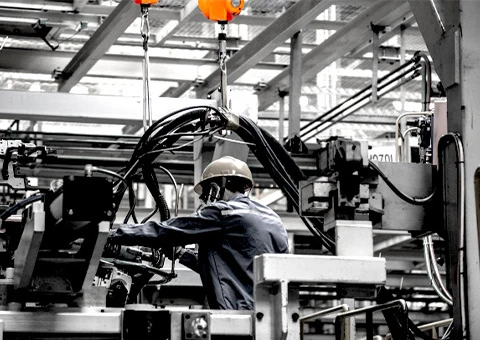portal jib crane
Understanding Portal Jib Cranes A Comprehensive Guide
In the world of material handling and construction, efficient lifting equipment plays an essential role in enhancing productivity and safety. One such piece of equipment is the portal jib crane. Combining the functionalities of a jib crane and a portal frame, these cranes are designed to provide flexibility, mobility, and support for various lifting tasks. This article delves into the design, applications, advantages, and considerations when choosing a portal jib crane.
What is a Portal Jib Crane?
A portal jib crane features a horizontal arm (the jib) that extends from a vertical column. It is mounted on a mobile base or frame, allowing it to traverse along a track or move freely within a designated area. The combination of the jib and portal frame not only enables the lifting of heavy loads but also provides considerable lateral movement to maximize operational space. This versatility makes portal jib cranes suitable for different industrial applications, including warehouses, construction sites, and manufacturing facilities.
Design and Components
The basic components of a portal jib crane consist of the following
1. Column The vertical structure that supports the jib. It is typically made of robust steel to withstand heavy loads. 2. Jib The horizontal arm that can pivot, allowing for lifting and moving materials within a semicircular area. Its length can vary based on the specific needs of the operation. 3. Rotation Mechanism A system that facilitates the movement of the jib around the vertical column. This can be manual or powered, depending on the crane’s specifications. 4. Hoist The lifting mechanism attached to the end of the jib. It can be electric, pneumatic, or mechanical, depending on the required lifting capacity. 5. Base or Wheels Depending on whether the crane is fixed or mobile, the base can be designed for stability or equipped with wheels for easy movement.
Applications of Portal Jib Cranes
Portal jib cranes are employed in various sectors owing to their adaptability and efficiency. Some common applications include
portal jib crane

- Manufacturing In factories, these cranes help in the assembly lines by lifting materials and components with precision. - Construction They assist in lifting structural materials and equipment, proving invaluable in constructing buildings and infrastructure. - Warehousing Portal jib cranes are ideal for loading and unloading goods, particularly in facilities with limited space. - Maintenance Tasks In shipyards and workshops, these cranes can be used to lift heavy machinery or perform equipment repairs.
Advantages of Portal Jib Cranes
1. Space Efficiency With a vertical design and rotating capabilities, portal jib cranes utilize limited floor space effectively by maximizing overhead lifting. 2. Mobility If mounted on wheels or tracks, these cranes can be moved seamlessly within designated areas, providing flexibility in operations. 3. Safety The design of the portal jib crane allows for better visibility for operators, reducing the risk of accidents during heavy lifting tasks. 4. Cost-Effectiveness Compared to larger overhead cranes, portal jib cranes often require a lower initial investment and maintenance cost, making them more accessible for smaller operations.
Considerations When Choosing a Portal Jib Crane
When selecting a portal jib crane, several factors should be addressed
- Lifting Capacity Ensure that the crane is suitable for the maximum weight of the loads you intend to lift. - Height and Reach Evaluate the operational height and reach required for your specific applications to ensure efficiency. - Environment Consider the workplace conditions, such as indoor or outdoor use, which may influence materials and design options. - Compliance and Standards Ensure that the crane meets industry safety standards and regulations for safe operation.
Conclusion
Portal jib cranes represent a vital asset in enhancing operational efficiency across various industries. Their unique design, mobility, and versatility make them an excellent choice for tackling tough lifting challenges in limited spaces. By understanding their components, applications, and the factors to consider when purchasing, businesses can make informed decisions, ultimately leading to improved productivity and safety in their material handling operations.
-
Unlock Seamless Relocation with Our Heavy Equipment Moving ExpertiseNewsJun.06,2025
-
Unleash Unrivaled Flexibility with Our Adjustable Gantry CraneNewsJun.06,2025
-
Unleash Heavy-Duty Efficiency with Our Industrial Gantry Crane SolutionsNewsJun.06,2025
-
Revolutionize Steel Handling with Our Magnetic Lifter RangeNewsJun.06,2025
-
Master Equipment Mobility with Premium Machinery Mover SolutionsNewsJun.06,2025
-
Elevate Your Material Handling with Magnetic Lifter TechnologyNewsJun.06,2025
-
YS Permanent Lifting Magnets: The Smarter Way to Handle SteelNewsMay.22,2025
